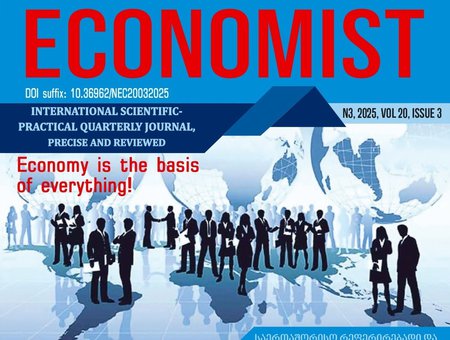Ante, L. (2021). Non-fungible token (NFT) markets on the Ethereum blockchain: Temporal development, cointegration and interrelations. Finance Research Letters, 44, 102097.
Burksaitis, M., Dacke, M., & Suda, J. (2021). NFTs and the new creative economy. Journal of Arts Management, 12(2), 103–118.
Catalini, C., & Gans, J. S. (2016). Some simple economics of the blockchain. MIT Sloan Research Paper No. 5191-16. https://ssrn.com/abstract=2874598
Chen, L. (2022). The impact of NFTs on creative industries and digital ownership: Opportunities and challenges. Journal of Digital Economy, 3(1), 45–60.
Christidis, K., & Devetsikiotis, M. (2016). Blockchains and smart contracts for the Internet of Things. IEEE Access, 4, 2292–2303. https://doi.org/10.1109/ACCESS.2016.2566339
De Filippi, P., & Wright, A. (2018). Blockchain and the law: The rule of code. Harvard University Press.
Dowling, M. (2022). Fertile LAND: Pricing non-fungible tokens. Finance Research Letters, 44, 102097. https://doi.org/10.1016/j.frl.2021.102097
Ethereum Foundation. (2022). Ethereum 2.0: The merge — What it means for NFTs and energy consumption. https://ethereum.org/en/eth2/merge/
European Parliament. (2023). Regulatory framework for crypto assets and NFTs: Challenges and recommendations.
Financial Action Task Force (FATF). (2022). Guidance on digital assets and NFTs.
Gans, J. S. (2019). The case for an NFT-based economy. Journal of Economic Perspectives.
Hsieh, Y.-Y., Vergne, J.-P., & Wang, S. (2018). The internal and external governance of blockchain-based organizations: Evidence from cryptocurrencies. Blockchain Research Letters.
Kaal, W. A., & Dell’Erba, M. (2021). The law and business of blockchain technology. Carolina Academic Press.
Kosba, A., Miller, A., Shi, E., Wen, Z., & Papamanthou, C. (2016). Hawk: The blockchain model of cryptography and privacy-preserving smart contracts. In IEEE Symposium on Security and Privacy, 839–858. https://doi.org/10.1109/SP.2016.55
Kshetri, N. (2017). 1 Blockchain’s roles in meeting key supply chain management objectives. International Journal of Information Management, 39, 80–89.
McConaghy, T., Marques, R., Müller, A., De Jonghe, D., McMullen, G., Henderson, R., ... & Granzotto, A. (2017). BigchainDB: A scalable blockchain database [White paper].
Meiklejohn, S., Pomarole, M., Jordan, G., Levchenko, K., McCoy, D., Voelker, G. M., & Savage, S. (2013). A fistful of bitcoins: Characterizing payments among men with no names. In Proceedings of the 2013 Conference on Internet Measurement (pp. 127–140).
Mougayar, W. (2016). The business blockchain: Promise, practice, and application of the next internet technology. Wiley.
Nadini, M., Alessandretti, L., Di Giacinto, F., Martino, M., Aiello, L. M., & Baronchelli, A. (2021). Mapping the NFT revolution: Market trends, trade networks, and visual features. Scientific Reports, 11, 20902.
Narayanan, A., Bonneau, J., Felten, E., Miller, A., & Goldfeder, S. (2016). Bitcoin and cryptocurrency technologies: A comprehensive introduction. Princeton University Press.
O'Dair, M., & Beaven, Z. (2017). The networked record industry: How blockchain technology could transform the record industry. Strategic Change, 26(5), 471–480.
Regner, F., Urbach, N., & Schweizer, A. (2019). NFTs in practice – Non-fungible tokens as core component of a blockchain-based event ticketing application. ECIS 2019 Proceedings. https://aisel.aisnet.org/ecis2019_rp/158/
Schär, F. (2021). Decentralized finance: On blockchain- and smart contract-based financial markets. Federal Reserve Bank of St. Louis Review, 103(2), 153–174.
Swan, M. (2015). Blockchain: Blueprint for a new economy. O'Reilly Media.
Swan, M. (2017). Blockchain: Blueprint for a new economy (2nd ed.). O'Reilly Media.
Tapscott, D., & Tapscott, A. (2016). Blockchain revolution: How the technology behind Bitcoin is changing money, business, and the world. Penguin.
Wu, J. (2022). NFT as a new asset class: Opportunities and challenges. Financial Innovation, 8(1), 15.
Yermack, D. (2017). Corporate governance and blockchains. Review of Finance, 21(1), 7–31.
Zohar, A. (2015). Bitcoin: Under the hood. Communications of the ACM, 58(9), 104–113.



